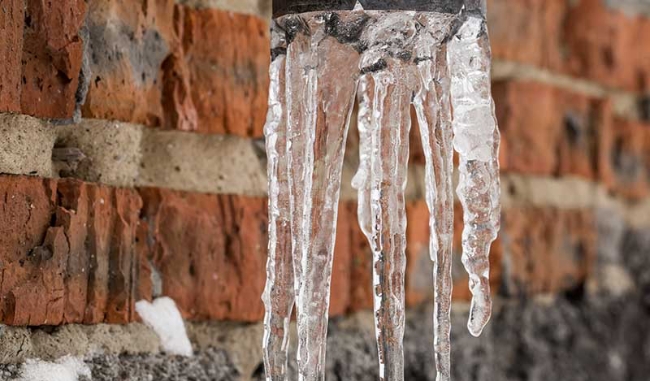Tips for Avoiding Frozen Plumbing in Cold Weather: Professional Advice
Tips for Avoiding Frozen Plumbing in Cold Weather: Professional Advice
Blog Article
They are making several great points related to Helpful Tips to Prevent Frozen Pipes this Winter as a whole in this content which follows.

Cold weather can ruin your plumbing, especially by freezing pipelines. Here's just how to avoid it from happening and what to do if it does.
Introduction
As temperatures drop, the risk of frozen pipelines increases, potentially leading to pricey repair work and water damages. Understanding just how to avoid icy pipes is critical for property owners in chilly climates.
Recognizing Frozen Pipes
What triggers pipes to freeze?
Pipelines ice up when subjected to temperatures below 32 ° F (0 ° C) for prolonged durations. As water inside the pipelines freezes, it broadens, putting pressure on the pipe walls and potentially causing them to burst.
Risks and damages
Icy pipelines can lead to water disturbances, building damage, and expensive fixings. Burst pipelines can flood homes and trigger considerable structural damage.
Indicators of Frozen Piping
Identifying frozen pipes early can prevent them from rupturing.
Exactly how to determine frozen pipes
Search for decreased water flow from faucets, uncommon smells or sounds from pipes, and visible frost on revealed pipelines.
Avoidance Tips
Protecting susceptible pipes
Cover pipes in insulation sleeves or use warmth tape to shield them from freezing temperatures. Focus on pipelines in unheated or outside areas of the home.
Home heating techniques
Maintain interior rooms appropriately heated up, especially locations with plumbing. Open up cabinet doors to permit warm air to distribute around pipes under sinks.
Securing Outdoor Plumbing
Yard hose pipes and exterior faucets
Detach and drain pipes garden hose pipes prior to winter. Set up frost-proof faucets or cover outdoor faucets with protected caps.
What to Do If Your Pipelines Freeze
Immediate actions to take
If you think icy pipelines, maintain taps open to ease stress as the ice thaws. Make use of a hairdryer or towels soaked in hot water to thaw pipes slowly.
Long-Term Solutions
Structural modifications
Think about rerouting pipes away from outside wall surfaces or unheated locations. Include extra insulation to attics, cellars, and crawl spaces.
Upgrading insulation
Purchase top quality insulation for pipes, attic rooms, and wall surfaces. Correct insulation helps preserve constant temperatures and minimizes the threat of frozen pipes.
Final thought
Avoiding frozen pipes calls for positive actions and quick feedbacks. By comprehending the reasons, signs, and safety nets, home owners can shield their pipes during cold weather.
6 Proven Ways to Prevent Frozen Pipes and Protect Your Home
Disconnect and Drain Garden Hoses
Before winter arrives, start by disconnecting your garden hoses and draining any remaining water. Close the shut-off valves that supply outdoor hose bibs and leave the outdoor faucet open to allow any residual water to drain. For extra protection, consider using faucet covers throughout the colder months. It’s also important to drain water from any sprinkler supply lines following the manufacturer’s directions.
Insulate Exposed Pipes
Insulating your pipes is an effective way to prevent freezing. Pipe insulation is readily available at home improvement stores and is relatively inexpensive. Pay close attention to pipes in unheated areas such as the attic, basement, crawl spaces, or garage. Apply foam insulation generously to create a buffer against the cold. You can also wrap your pipes in heat tape or thermostat-controlled heat cables for added warmth.
Seal Air Leaks
Inspect your home for any cracks or openings that could let in cold air. Seal any holes around the piping in interior or exterior walls, as well as the sill plates where your home rests on its foundation. Additionally, make sure to keep your garage door closed unless you’re entering or exiting. Leaving it open creates a significant air leak that can lead to frozen pipes.
Allow Warm Air Circulation
During cold snaps, it’s essential to allow warm air to circulate evenly throughout your home. Leave interior doors ajar to promote better airflow. Open kitchen and bathroom cabinets to help distribute heat consistently around the rooms. If you have small children or pets, be sure to remove any household chemicals or potentially harmful cleaners from open cabinets for safety.
Let Faucets Drip
A small trickle of water can make a big difference in preventing ice formation inside your pipes. When temperatures drop significantly, start a drip of water from all faucets served by exposed pipes. This continuous flow helps prevent the water from freezing. Additionally, running a few faucets slightly can relieve pressure inside the pipes, reducing the chances of a rupture if the water inside does freeze.
https://choateshvac.com/6-proven-ways-to-prevent-frozen-pipes-and-protect-your-home/

I stumbled upon that blog post on How to prepare your home plumbing for winter weather when doing a lookup on the internet. Those who enjoyed our blog entry please remember to pass it around. Thanks for taking the time to read it.
Call Today Report this page